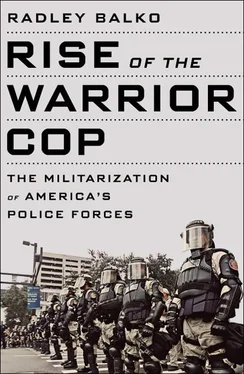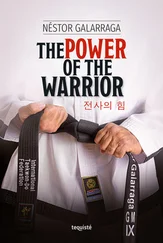For a while, it looked as if Ervin might have had enough support to strip the measure from the larger bill. After the first day of debate, even Senator Dodd, the bill’s sponsor, had reservations. Dodd told the New York Times that the no-knock raid was “one of the toughest questions I’ve faced,” and that he was now “almost of an open mind” about it.
But Dodd toughened his resolve, and the no-knock supporters fought back. Dodd forebodingly warned his fellow senators that “the hoodlums are watching us, the dope peddlers are watching us. They want to know if we mean what we say.” Republican senator Robert Griffin of Michigan argued that the no-knock raid was no big deal because twenty-nine states had already legalized it. In truth, only a handful of state legislatures had explicitly legalized the tactic. In most cases, it was simply that a state appellate court had at some point in the state’s history refused to throw out evidence obtained in a raid in which police didn’t knock and announce themselves. That was quite different from what the Senate was considering: explicitly authorizing federal agents to use the no-knock raid as a get-tough-on-criminals tactic.
The Senate’s two party leaders also lined up against Ervin. Republican minority leader Hugh Scott of Pennsylvania lamented, “We are encountering a certain amount of sob-sisterism from people who tend to weep somewhat excessively about the rights of the drug pusher.” Given that the measure’s chief opponent was Ervin, a fierce critic of the Warren Court who supported the Republicans’ crime bill in 1968, the charge was rubbish. Majority Leader Mansfield, meanwhile, returned to his argument of shifting responsibility: he urged the senators to simply put their trust in the courts to properly oversee no-knock warrants.
Still, Ervin had the momentum, and a growing faction of senators were lining up behind him. By January 27, the Times reported, “Senate leaders were predicting that Senator Ervin would win his fight.”
But then Senator Griffin pulled off a brilliant bit of legislative maneuvering. He introduced an amendment changing a single word in the no-knock provision. In the original wording, police could enter without knocking if they could show that evidence “ may be destroyed.” Griffin changed the phrase to “ will be destroyed.” Technically, that was supposed to make it more difficult to obtain a no-knock warrant. In practice, it made no difference at all. It was a standard that had no real definition, and in any case, in the event that a police officer did hypothetically exaggerate the threat of a suspect destroying evidence to get a no-knock, the mere fact that it was a no-knock raid meant that it was a standard that could never be verified after the fact.
But it was still a shrewd bit of politicking. Even senators who opposed the no-knock raid in general might vote for an amendment restricting its use, just in case the law itself was passed—and several did. Griffin’s amendment passed 44–40. Griffin then revealed his trickery. Once his amendment had passed, he pointed out that the no-knock law in this bill was now identical to the bill the Senate had passed for DC just a month earlier. That one had slipped through without much debate. Any senator voting against this bill would then have to explain why he voted to allow no-knock raids in DC but was now against allowing federal agents to use the tactic in the rest of the country.
On January 28, the no-knock provision passed, 70–15. But there was nothing to fear, Dodd promised. Federal agents would use the new tactic “in the most discriminating manner possible.” 12

THE PURPOSE OF A CONFERENCE COMMITTEE IS TO HASH OUT the differences between the versions of similar bills that emerge from the House and Senate. In theory, these committees are made up of the politicians who shaped the bill in each chamber and are expected to put up a fight for the version of the bill authored by their committee. That didn’t happen with the DC crime bill when the House-Senate conference committee began work on it in the spring of 1970. The House version was much tougher than the Senate version, and Senator Tydings completely capitulated on no-knock, preventive detention, and most of the other controversial provisions, sometimes over the objections of four members of his own committee (two of whom were Republicans). In the end, the Senate conferees voted for the House bill and what Ervin called its “garbage pail” of police powers, 5–3. The full compromise bill would return to the full House and Senate one last time before being sent to Nixon for his signature. 13
Meanwhile, the citizens of DC began to learn about what was in this bill about to be imposed on their city. They wanted no part of it. DC mayor Walter Washington spoke out publicly against the no-knock and preventive detention measures. A city attorney told the New York Times that no one in the city’s government had been consulted while the bill was being drafted. It was all done by Nixon aides. 14In late May, a group of black civic and religious leaders, including Democratic National Committee chairman Channing Phillips and future mayor Marion Barry, spoke out against the bill. Incredibly, they told citizens of DC that if they caught police breaking into their homes under the new law they should “resist by appropriate action.” What did that mean? One of the community leaders, Julius Hobson, a cofounder of the DC statehood party, suggested greeting the raiding cops with a shotgun. “I would shoot him down in cold blood just like I would swat a fly,” he said. Three other black leaders, all clergy, agreed with him. 15They weren’t alone in that sentiment. During the House debate on the bill, Rep. Bertram Podell, a white Democrat from Brooklyn, said that he too would shoot any police officer who tried to enter his home unannounced. 16
But such objections were up against soaring crime in the city. The figures from 1969 in particular were grim. There were 287 murders that year, up from 195 the previous year and just 82 in 1962. Robberies were up 50 percent from 1968, and rapes—incredibly—jumped more than 300 percent. The media piled on. In March 1970, the New York Times ran a long, sensational article about crime in DC. The lead photo showed a woman walking in the dark in front of a notable DC landmark. Embedded in the photo was a drop quote: “You must be out of your mind to be out alone after dark in a neighborhood like this.” The caption under the photo read, “The warning quote above was spoken by a passer-by to a woman in Washington. She looked up—and there was the White House.” The article also borrowed some of Nixon’s war rhetoric. In discussing how some blacks in DC had become distrustful of police, author James Batten (who would later become chairman of Knight-Ridder) wrote, “In the slums of Washington, as in the hamlets of South vietnam, if the natives wish to protect fugitives from the authorities, they usually can succeed.” 17
As it turned out, crime in DC peaked before the new crime bills had even passed. By May 1970, crime in the city had fallen for five straight months. At that point, the only Nixon policies that had been implemented in DC were a federally funded methadone program and some funding for additional police officers. The methadone program in particular appeared to be working. But the Nixonites had little interest in taking credit for a treatment program. As Nixon aide Egil Krogh put it to top Nixon adviser John Ehrlichman, “All the liberals need is an argument that if the picture is improving with just the addition of more police and a new narcotics treatment agency, there is no need for the repressive Nixon crime proposals.” 18
Читать дальше













